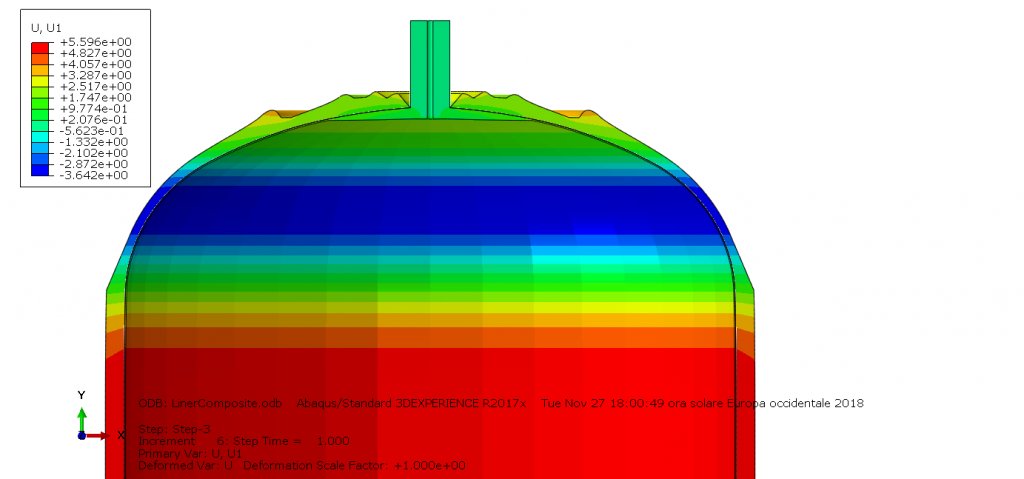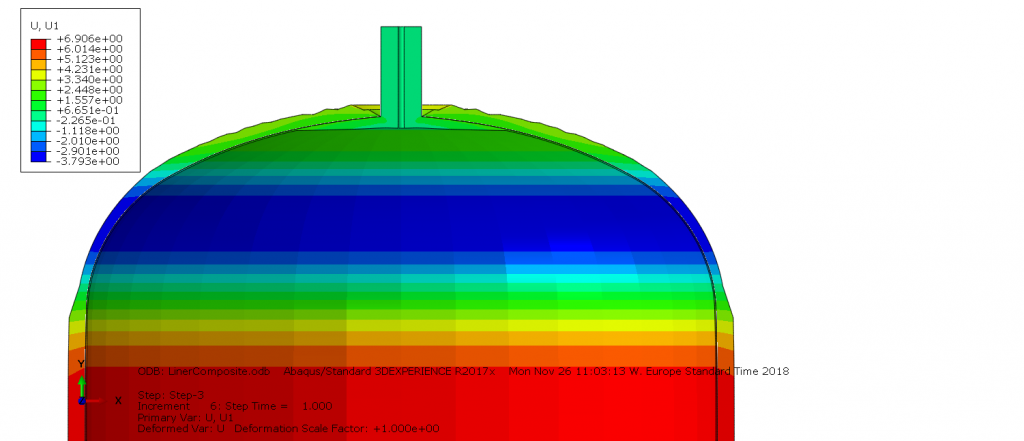For an optimal design of the pressure cylinders used in the GASVESSEL, project partners CNGV and ESTECO developed an optimization platform , based on ESTECO’s software modeFRONTIER. The software platform has lately been updated to also include optimization of manufacturing parameters.
The previous version of the software platform already took several optimization parameters into account. These include geometrical (e.g., liner diameter, steel thickness) and operational parameters and material properties of the steel liner and composite layers. Preliminary analyses minimized the cylinder’s mass, while still maintaining a sufficiently strong structure to withstand the stresses on the material due to the pressurized gas filling. These results optimize the operational parameters as well as the costs of the pressure cylinder. For more details on the preliminary optimization results have been published in the September issue of the GASVESSEL newsletter .


Fig.1+2 Radial displacements of the two selected configurations at exercise conditions
Recently ESTECO updated the platform to also take manufacturing parameters of the winding process into account. Parameters, such as the winding angle distribution and number of composite layers can now be optimized as well. To achieve this, a dedicated software (CADWIND) has been integrated in modeFRONTIER. This update allows the automatic generation of a range of machine files with variable combinations of parameters. The generated machine files contain instructions for the winding machines to generate the winding of composite material around the cylinder.
The optimization has been executed with the objectives of minimizing the number of winding layers (and therefore the total weight and cost of the cylinder) which are needed to satisfy the structural constraints, and of minimizing the variation of the composite thickness distribution along the cylinder (avoiding the waste of material by guaranteeing a uniform coverage of the structure).
As a result, two optimal configurations have been selected by CNGV, which allow an optimal compromise between costs (minimum composite material volume reduced to 3.35 m3), distribution of composite layers (standard deviation reduced to 9mm), and exercise condition stresses (Von Mises stresses on the steel liner reduced to 400-500 MPa over a material strength of 750 MPa).
The configurations have been validated by ESTECO through the execution of a structural (FEM) analysis. They evaluated the deformation and stresses on the steel liner and composite overwrap structure in the various phases of the operating conditions (autofrettage and exercise conditions). In all the situations, the structural constraints have been respected.
In the next and last period of the Work Package, ESTECO will perform other FEM analyses to verify alternative solutions that CNGV will eventually identify, characterized by lower weights (less composite layers and therefore costs) and lower safety factors.
